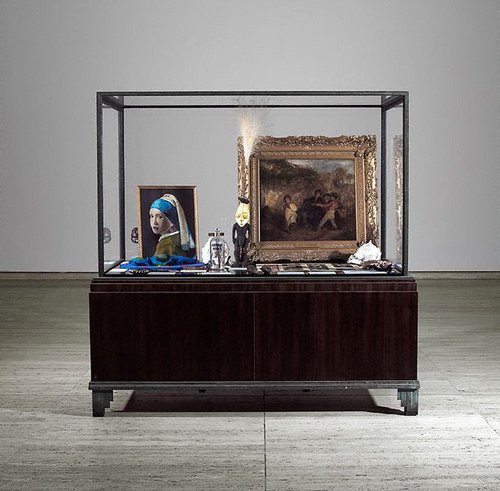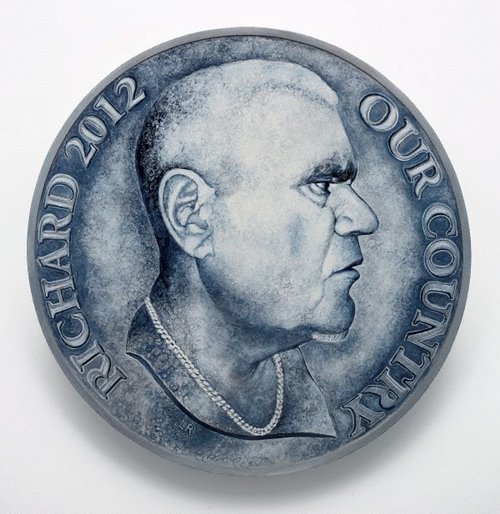-
Details
- Date
- 2010
- Media category
- Photograph
- Materials used
- giclée pigment print
- Edition
- 1/5
- Dimensions
- 97.5 x 64.1 cm sight; 103.0 x 69.2 x 6.0 cm frame
- Signature & date
Not signed. Not dated.
- Credit
- Donated through the Australian Government's Cultural Gifts Program by Daniel Mudie Cunningham 2018
- Location
- Not on display
- Accession number
- 101.2018
- Copyright
- © Luke Roberts
- Artist information
-
Luke Roberts
Works in the collection
- Share
-
-
About
Since the 1970s, Australian artist Luke Roberts has inhabited a range of performative personas – whether borrowed from art history and pop culture or fabricated from his own imagination – and crafted multiple mythologies that playfully exult queer history and ideology. While he works across media, photography (and the performance it demands of its subject) has always been central to his practice. Roberts’ work fits into the lineage of artists who transform for the camera, from Cindy Sherman, to Yasumasa Morimura and Leigh Bowery, to serve political propositions. While much of Roberts’ work examines the aesthetic and influence of camp, often adopting drag as a device, he also grapples with colonial history and the legacy of Catholicism as well as the transformative mechanism of performance itself. Whether or not Roberts himself appears in his work (however camouflaged) the presence of his own persona – his own status as a gay white male brought up Catholic in a Joh Bjelke-Petersen-era Queensland – is distinctly felt.
In this work, Roberts masquerades as camp icon Edith ‘Little Edie’ Bouvier Beale. A model, cabaret performer and socialite, Edie was the first cousin of Jacqueline Onassis but became famous when she featured, along with her mother, in the 1975 documentary film Grey Gardens by Albert and David Maysles.
Edie’s peculiar mannerisms, erratic behaviour, and innovative approach to fashion (particularly the makeshift headscarves derived from towels and cardigans she wore to hide her alopecia) attracted perverse fascination and cult adoration and have had a seismic impact on the vernacular of queer and mainstream culture in equal measure. Tributes to Little Edie have appeared throughout fashion, film, and music history since the 1970s. In one of the most memorable scenes from the documentary, Edie refers to her outfit as ‘the best costume for the day’. In this line, loaded as it is with an acknowledgement that a public persona is little more than a disguise, we find the foundational premise of Roberts’ art practice. At ease in different costumes, Roberts understands the potency of performance as a means of both crafting and interrogating identity.
-
Exhibition history
Shown in 1 exhibition
20th-Century galleries, lower level 1 (rehang), Art Gallery of New South Wales, Sydney, 20 Aug 2022–2023



